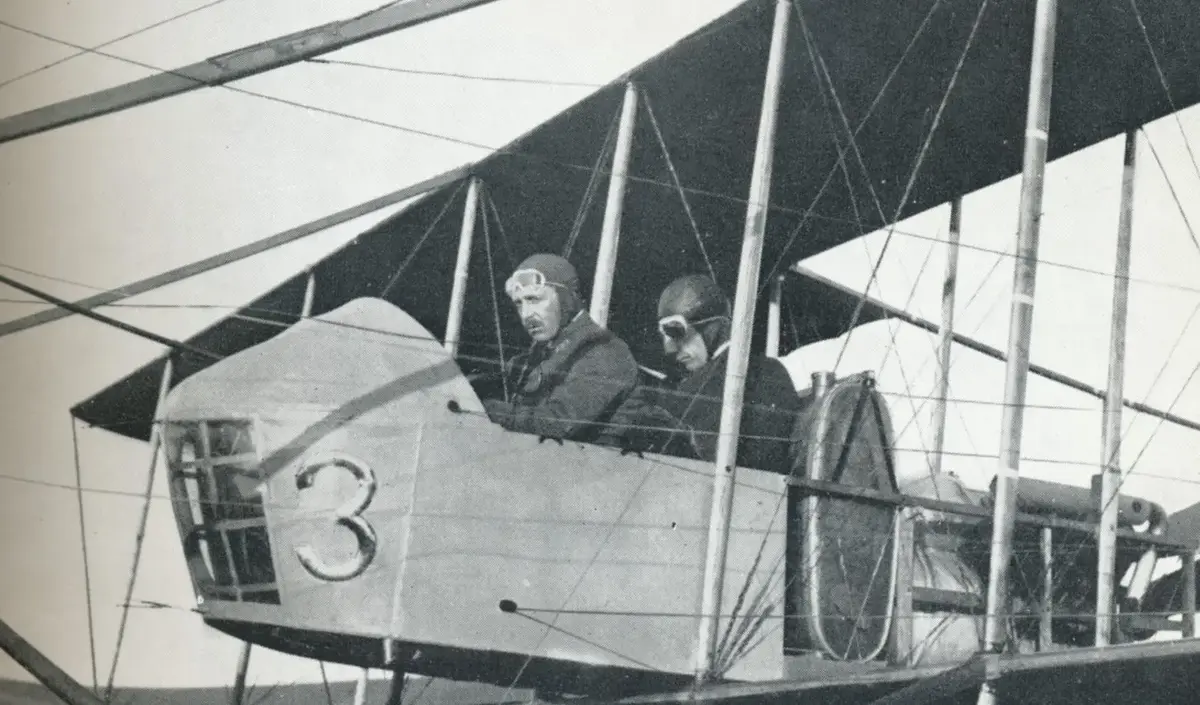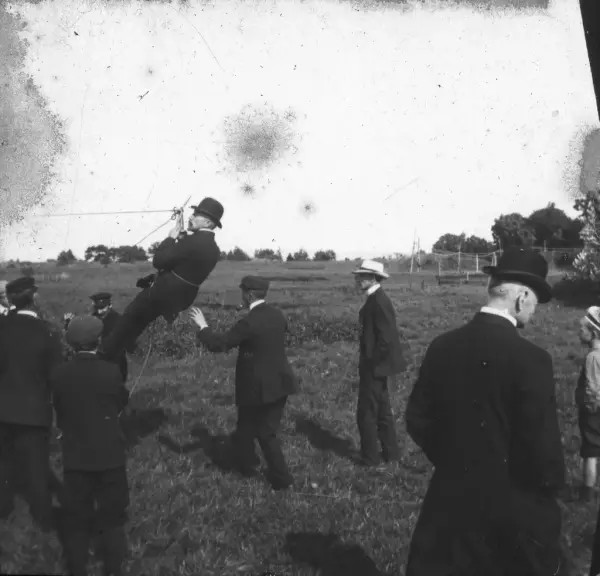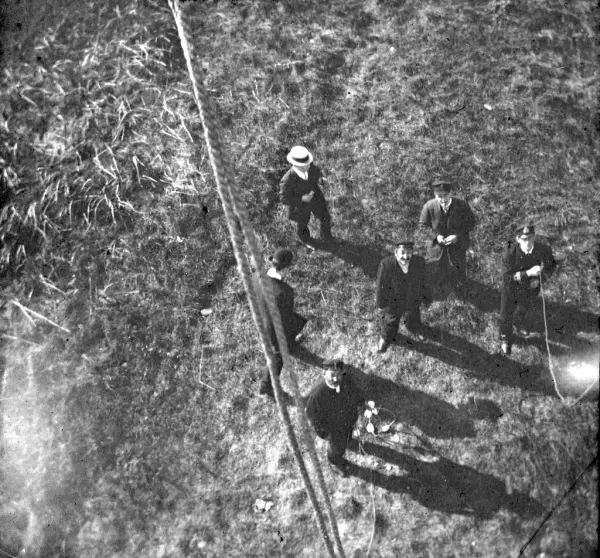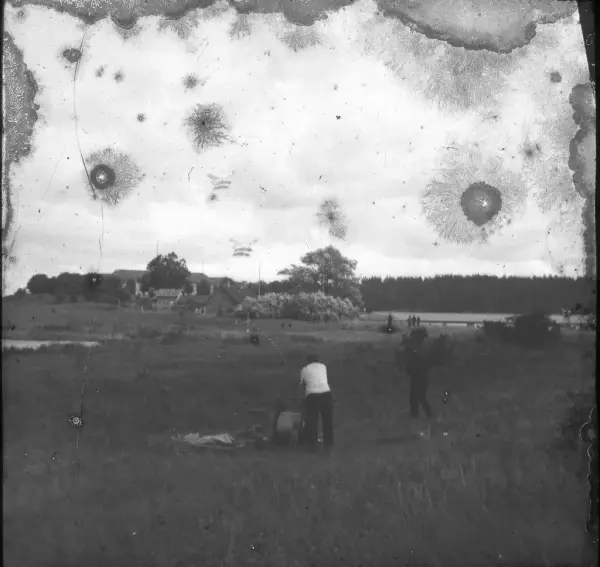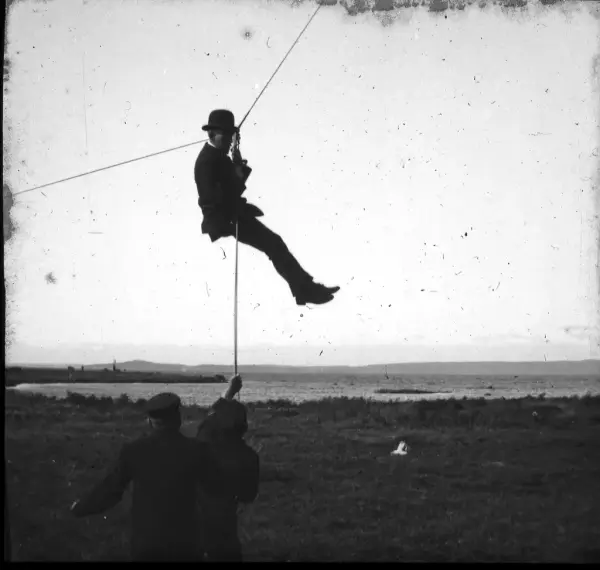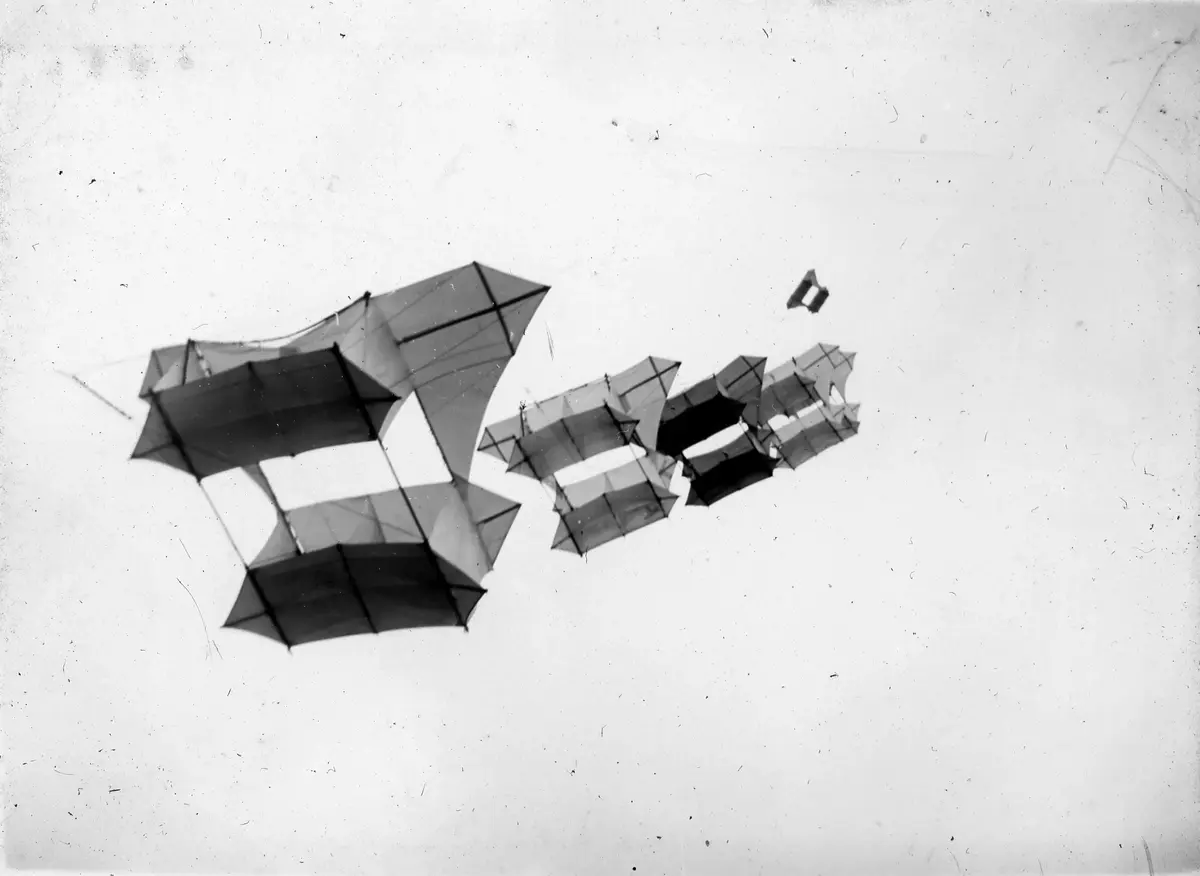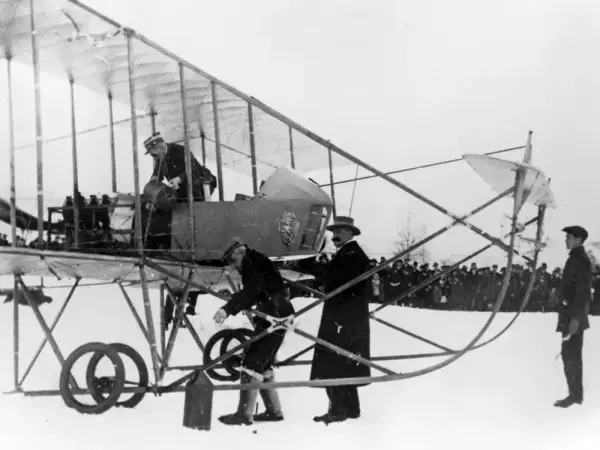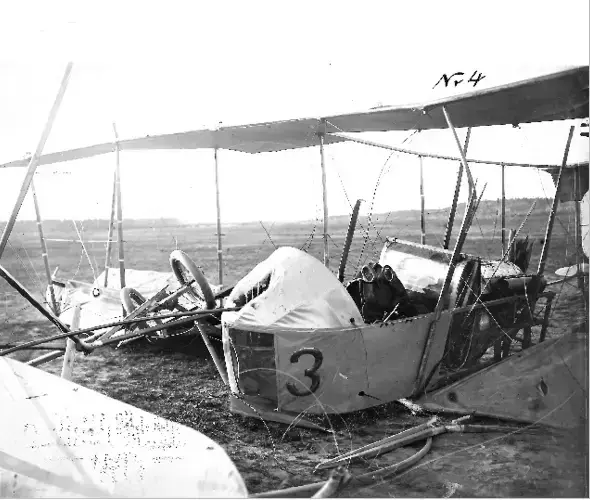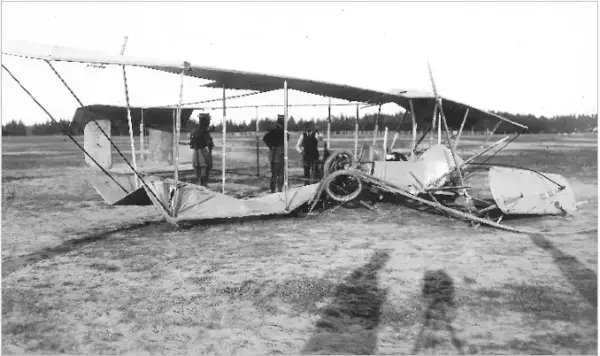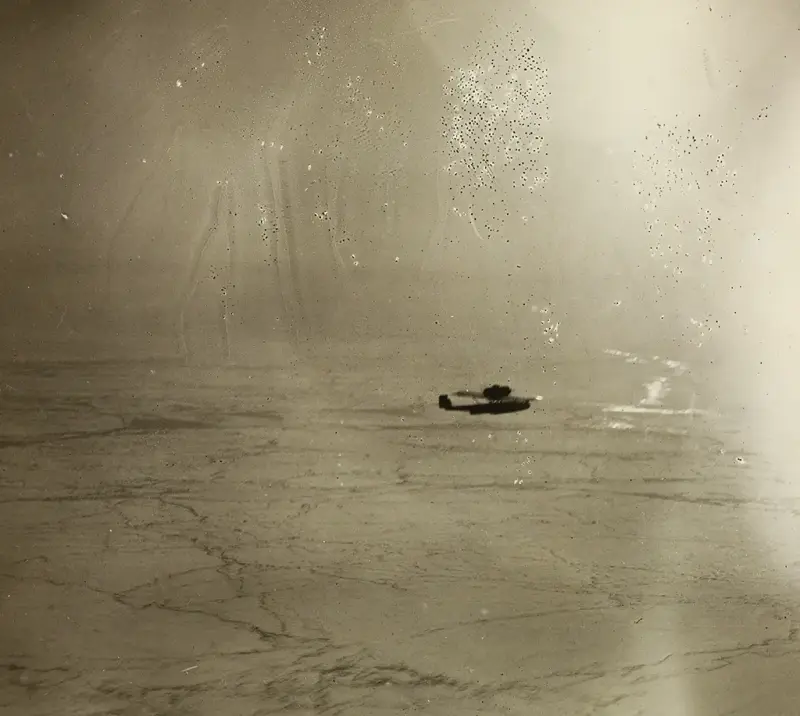The Kites
In the summer of 1909, some specially constructed kites hover in the air over Vealøs, an island off the coast of Horten, south of Oslo.
The kites were designed by Einar Sem-Jacobsen, one of Norway’s aviation pioneers. He was inspired by Samuel Franklin Cody, a traveling American-British showman who became known for his kite-shaped boxes before dying in a plane crash a few years later.
Sem-Jacobsen’s kites were intended to lift a person several hundred meters into the air.
Dressed in a suit and bowler hat, Amundsen rises into the sky for the first time.
- 1/4
Source: Norwegian Aviation Museum - 2/4
Source: Norwegian Aviation Museum - 3/4
Source: Norwegian Aviation Museum - 4/4
Source: Norwegian Aviation Museum
But already during the test flights, the kites prove to be life-threatening.
On July 23, 1909, Einar Sem-Jacobsen and the expedition’s second-in-command, Ole Engelstad, are testing the kites.
But the weather is bad—clouds are dark and heavy. Thunder and lightning soon roll in, and they agree to pack up the equipment. The kite still flying is tethered with copper wire. Engelstad takes on the task of bringing it down. And just as he grabs the copper wire, lightning strikes.
Those nearby say smoke started rising from his body. That his boots nearly burned off.
Unconscious, he falls backward.
Sem-Jacobsen rushes to him, but it’s too late. Engelstad dies in Sem-Jacobsen’s arms.
The kites are never used on any expedition.
